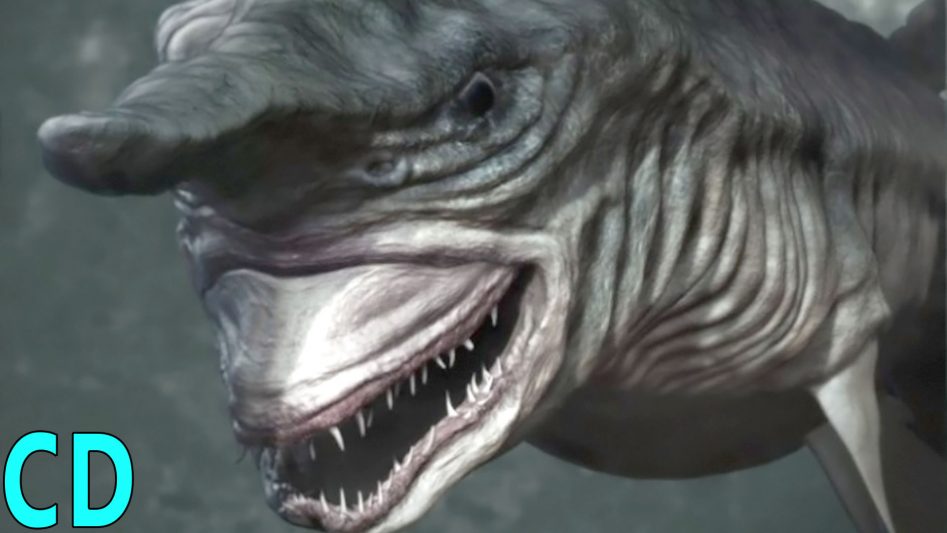There are a lot of very scary looking animals and creatures out there, here a just some that creep people out.
Amazonian giant centipede (Scolopendra gigantea)
If your creepy crawly phobias increase with the number legs they have, as well as the size then, now is the time to go and make a cup of tea or coffee and come back later.
This is the Scolopendra gigantea, aka Amazonian giant centipede.
These unnaturally large arthropods have 46 yellow legs and can grow up to around 35cm in length, about the same a mans forearm
They have a venomous bite they use to kill it’s prey which can be anything upto the size of a mouse, bat, small snakes and birds.
Whilst the bite is not fatal to fit healthy humans, it can cause severe pain, swelling, chills, fever, and weakness.
If your wondering how they catch bats, that’s quite clever, they go into the bats caves then hang upside down, holding on with just a few pairs of legs and catch the bats as the fly past.
These are now very popular among collectors of exotic pets but just be aware they are known to be very aggressive and nervous, mmmm I think I pass on that and stick with a budgie.
Goblin Shark
This could well be Dobby the House Elf’s long lost aquatic cousin but it’s in fact the Goblin shark and the name is really rather apt with its huge nose appendage and protruding teeth just making it look even weirder but that’s not the only strange thing about these sharks.
They live in very deep waters normally in tropical areas close to the ocean floor and are often called a living fossil’s because they have been around for about 125 million years.
Because they live in deep ocean between 40 and 1200m where there is almost no light they are sometimes called the vampire shark. Their eyes are small and the skin is almost translucent with the pinkish coloring coming from the oxygenated blood within their capillaries.
They are normally up to about 4 meters in length but it’s believed they can grow larger.
The large flattened nose is covered in sensors which can pick up extremely small electric fields produced by its prey which can be fish, squid, sting rays and crabs either on the sea bed in free water.
However, it’s real party piece are its jaws. It catches it’s prey by rapidly extending it’s entire mouth outwards. The flexible jaws are not part of it’s skull and though some other sharks can push their jaws out a bit, this looks more like alien with it’s extending mouth.
Golden Orb Weaver Spiders
The fear of spiders seems to be inversely related to their size. Little money spiders are quite cute, bigger house spiders are getting a bit scary but when you get to ones like the golden orb weavers it’s enough to give most arachnophobes a heart attack.
These are also known as giant wood spiders, or banana spiders. They are normally found in warmer climates around the world and are the oldest surviving spiders with fossilized specimens dating back 165 million years.
They grow big enough to catch small birds in their webs and even half metre long snakes have been photographed being captured and eaten.
They get their name from the colour of the silk which shines like gold in the sun. The yellow helps to camouflage the web when in the shade and in the sun the bright yellow shiny strands attract bees. The spider itself can also adjust pigment intensity relative to background light levels and color to help hide it from insect vision.
Luckily these spiders are relatively nontoxic to humans with the bite causing moderate pain and swelling for about a day, though the sight of the biggest ones at 13cm or 5 inches across is enough to scare most humans away, which is ironic because they grow to their biggest size in urban environments, probably because of the lack of predators and parasites and more abundant food due to artificial lighting.
Hagfish
Sometimes it seems as though nature tries to make the most ulgy and disgusting creatures just to creep you out. Take the hagfish for example, the mouth and head look like the work of an over imaginative horror film special effects department.
They are the only creatures to have a skull but no backbone or jaws, they have skin rather than scales and they are ancient. The only known fossil hagfish, which is 330 million years old, looks very similar to modern hagfish.
But the real scare factor is its ability to make slime, not just the little bit you get handling an eel for example. The Hagfish can make as much as 20 liters on slime in a minute and if that doesn’t get them out of a sticky situation to excuse the pun they can wrap themselves in knots to scrape off the slime and make an escape.
Hag fish are bottom feeders and whilst their main diet is worms they also feed on the dead bodies of fish and other animals that sink to the seabed where they like to burrow in to the bodies and eat from the inside out bursting out like a certain alien sci fi film.
Amblypygi – Tailless Whip Scorpions or Whip Spiders
If you crossed the ugliest spider with an equally ugly scorpion then the mutant offspring would probably look like the whip spider aka Tailless Whip Scorpions.
This twisted creatures appear to be made out of the most unsettling portions of spiders, praying mantises, crabs, and daddy longlegs and is a uniquely scary looking product of nature.
Their flattened bodies and legs range in size from about 5cm upto a scream inducing 25cm across.
They are found in the warmer parts of the world and are mostly nocturnal, living in tropical forests in tight dark places under logs and rocks and also in dark caves where they are sometimes known to cover the walls
Whilst these are close relatives of spiders, they are actually neither spiders nor scorpions, the have eight legs but only six are used for walking like a crab and the other two are sensory organs, held out in front for finding its prey which are usually crickets, beetles, caterpillars etc.
These creatures might look like the deadliest spawn of Satan but they are in fact harmless, to humans anyway.
They are non venomous but the claws can give you a nip like a crab. They have 8 eyes but have poor vision and rely on their sensory whips to find their way around.
Cthulhu Larva AKA Abyssal Sea Cucumber or Sea Pig
With no eyes or face the abyssal sea cucumber lives at depth of up to 19,000 ft on seafloor of the deep oceans
These sea cucumbers are related to starfish and have squatty little tube legs which they can inflate, they also have a giant mouth which they use to hoover up the detritus that falls from the surface.
They graze the ocean floor in groups of up several hundred or thousands at a time and often caught up in the nets of deep sea trawlers. They are not poisonous, have no scary big teeth or claws, so they are pretty much harmless but they do look as weird as heck.
Aye Aye
If you were wondering where the makers of gremlins got their creature ideas from then look no further that the Aye Aye.
Unlike the other cute members of the lemur family, the Aye Aye looks like it hit every branch as it fell out of the ugly tree.
It has the wide staring eyes, weird large ears and especially elongated middle finger which they use to extract grubs from trunks and branches of trees and they are not afraid of humans.
Researchers in Madagascar reported accounts that tell of individual Aye Aye’s strolling nonchalantly in village streets or even walking right up to naturalists in the rainforest and sniffing their shoes.
They were believed to have become extinct in 1933 but were rediscovered in 1966.
However, In their native Madagascar they are seen as a harbinger of evil and often killed on sight.
It’s believed that appearance of an Aye Aye predicts the death of a villager and the only way to prevent this is to kill the Aye Aye and hang the body up to ward off evil spirts, good for villagers but not so for the Aye Aye.
Resourses :
https://www.youtube.com/watch?v=Ps82VSoLQY4
https://www.youtube.com/watch?v=-1VdzxXVSZs
https://www.youtube.com/watch?v=8iVXvAWyNBM
http://sanjosedecalasanzdeduitama.edu.co/calasanz/house-centipede-bite-marks
https://www.youtube.com/watch?v=7atYmpkoBPM
https://www.youtube.com/watch?v=nF-lbEAg2LM
https://www.youtube.com/watch?v=wQvz7NC7i4s
https://www.youtube.com/watch?v=i7jIucBqcdc
https://www.youtube.com/watch?v=j65i5PDUeT4
https://www.youtube.com/watch?v=BSIk9I8bdOk
https://www.youtube.com/watch?v=t5PGZRxhAyU
https://www.youtube.com/watch?v=owKFlNU_T5w
https://www.youtube.com/watch?v=pmaal7Hf0WA
https://www.youtube.com/watch?v=RrPvMMkQkk0
https://www.youtube.com/watch?v=LaB9oRQxGYU
https://www.youtube.com/watch?v=awtMPTl7Cks
https://www.youtube.com/watch?v=OG0cFtKXZdo
https://www.youtube.com/watch?v=hJEnVQnlzGE
https://www.youtube.com/watch?v=x3dvs6C8c7g
https://www.youtube.com/watch?v=FzFxjmr5mW8
https://www.youtube.com/watch?v=HB_fQ1Rg_K4




Comments
This inuctdores a pleasingly rational point of view.